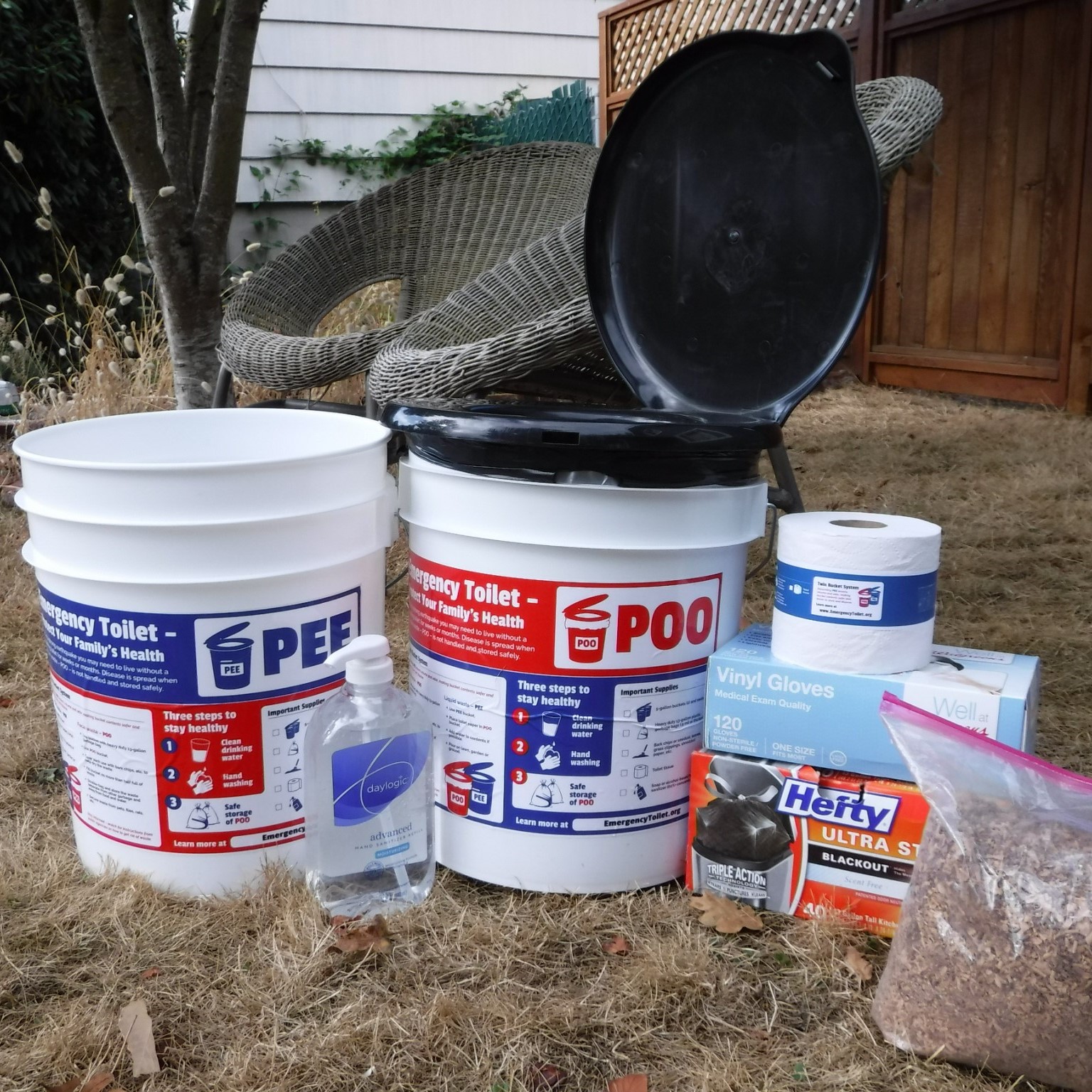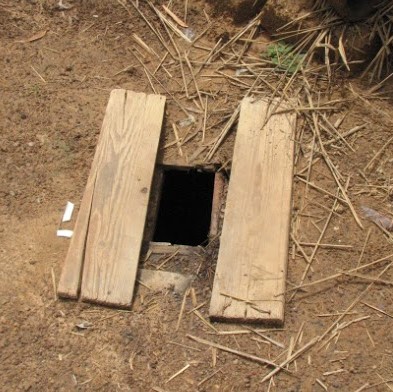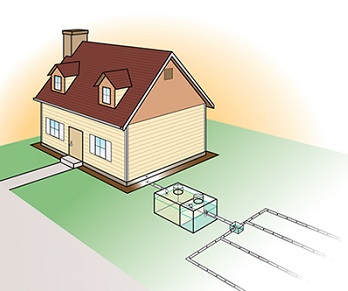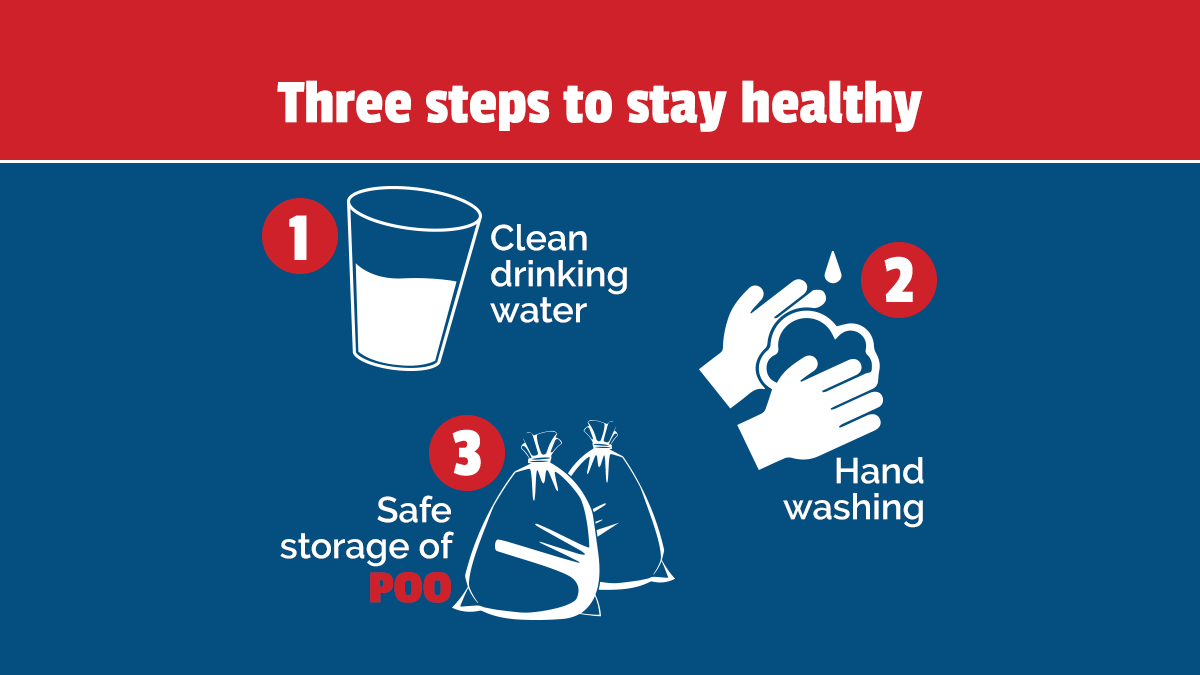Three Steps to Stay Healthy
If Toilets Aren't Working
After a major disaster, toilets and sinks may not work. You will need:
- Plenty of clean water. Visit regionalh2o.org for tons of great advice on water storage and treatment.
- Good hand-washing practices. Visit the CDC's website for instructions and check out this great idea for building a handwashing station.
- An emergency toilet, which is a way to safely store and dispose of human waste (poo). The method you should use depends on where you live and what you can access. Keep reading to learn more about three great methods: Twin Buckets, Latrines, and Septic Systems.
Method 1: Twin Buckets

When to Use Buckets
You don't have a septic system? You don't have space for a latrine? You don't have the ability to shovel dirt? You do live in an area with a high water table (like many parts of the Portland metro area)? You should use the Twin Bucket System. Read the Emergency Toilet Guidebook for instructions.
Label Your Buckets
Print bucket labels and use packing tape to secure them to your pee and poo buckets. During an emergency, refer to the instructions and help others understand how it works. If you live in the Portland-Vancouver Metro Region, contact your city or county emergency management office to see if they have water-resistant bucket stickers in stock. They may be available in English, Chinese - 汉语, Korean - 한국어, Somali - af Soomaali, Spanish - Español, Vietnamese - Tiếng Việt, Russian - русский, and Ukrainian - українська мова.
Important! After Using Your Buckets
Stay informed. Public agencies will provide info about how to get rid of poo bags safely.
Method 2: Latrine

When to Use a Latrine
You don't have supplies for a Twin Bucket System? You don't live on a high water table? You do have lots of space in your yard? You do have the ability to shovel dirt? Learn how (and when) to build a latrine (or pit toilet), which is a hole in the ground that collects human waste in an emergency.
A latrine needs to be at least two feet deep. If you start digging and see water, stop immediately. You’ve hit the water table. That’s part of our freshwater supply, and we don’t want your poo in it. Read the Emergency Toilet Guidebook for instructions. Print the instructions and put them in your emergency kit.
After Using Your Latrine
Stay informed. Public agencies will provide info about public health risks.
Method 3: Septic System

When to Use a Septic System
Home septic systems are in the ground and can be damaged by earthquakes. If you have one, learn how to check your septic system to ensure it's safe to use. Do this now, before a pipe-breaking disaster occurs and your internet stops working. Read the Emergency Toilet Guidebook for instructions. Print the instructions and put them in your emergency kit.
After Using Your Septic System
Stay informed. Public agencies will provide info about public health risks.
Quick Tips
Learn More
Emergency Toilet Guidebook
Want to know more about these options? Read the Emergency Toilet Guidebook to find answers to common questions and learn more about septic systems, latrines, and the Twin Bucket System.
Project Background
Visit the Regional Disaster Preparedness Organization (RDPO) website to learn more about the Emergency Toilet Project. Learn about the project background and how to access materials for public outreach and post-disaster messaging.
Reproduction of Materials
These materials are not to be used for commercial purposes. Anyone may use them for non-commercial purposes, as long as they site the source: "Produced by the Regional Disaster Preparedness Organization (RDPO) of the Portland Metropolitan Region, with funding from the U.S. Department of Homeland Security/Urban Areas Security Initiative (UASI) grant program."
